Abstract
Counterimmunoelectrophoresis (CIE) was found to be a rapid, specific method for detecting circulating antibodies to Legionella pneumophila, using a simple ultrasonically disrupted antigen. The diagnostic specificity of the technique was 93% and the diagnostic sensitivity was 86.3%. Both IgM and IgG classes of antibody can be detected. There is some cross-reactivity between serogroup 1 and serogroup 6 but none between serogroup 1 and serogroups 3, 4, and 5. It is suggested that CIE may provide a simple, reproducible screening test for Legionnaires' disease.
Full text
PDF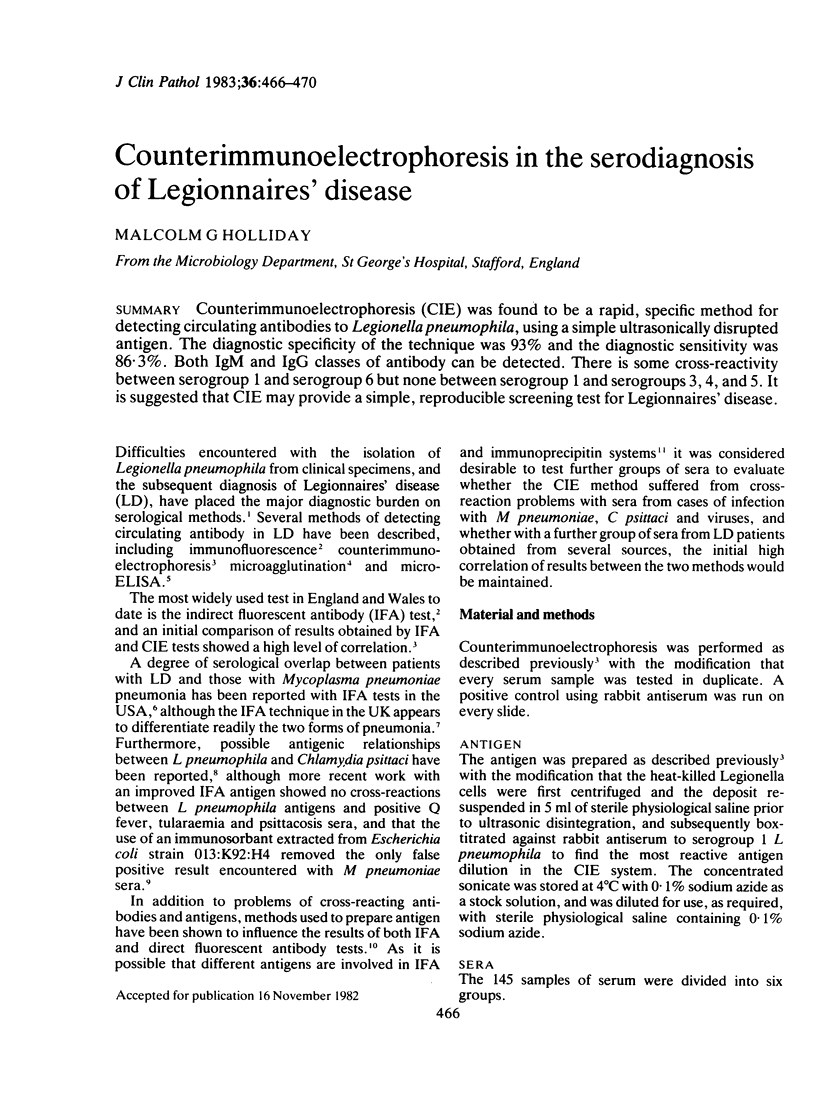
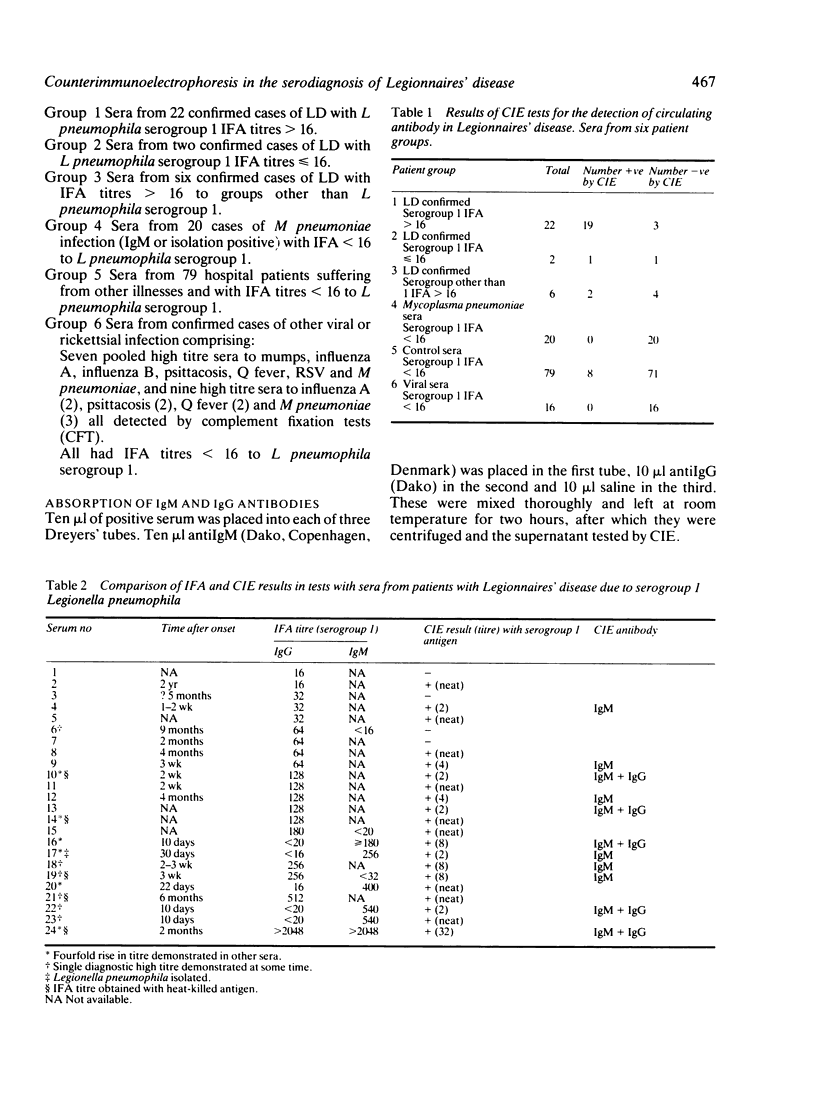
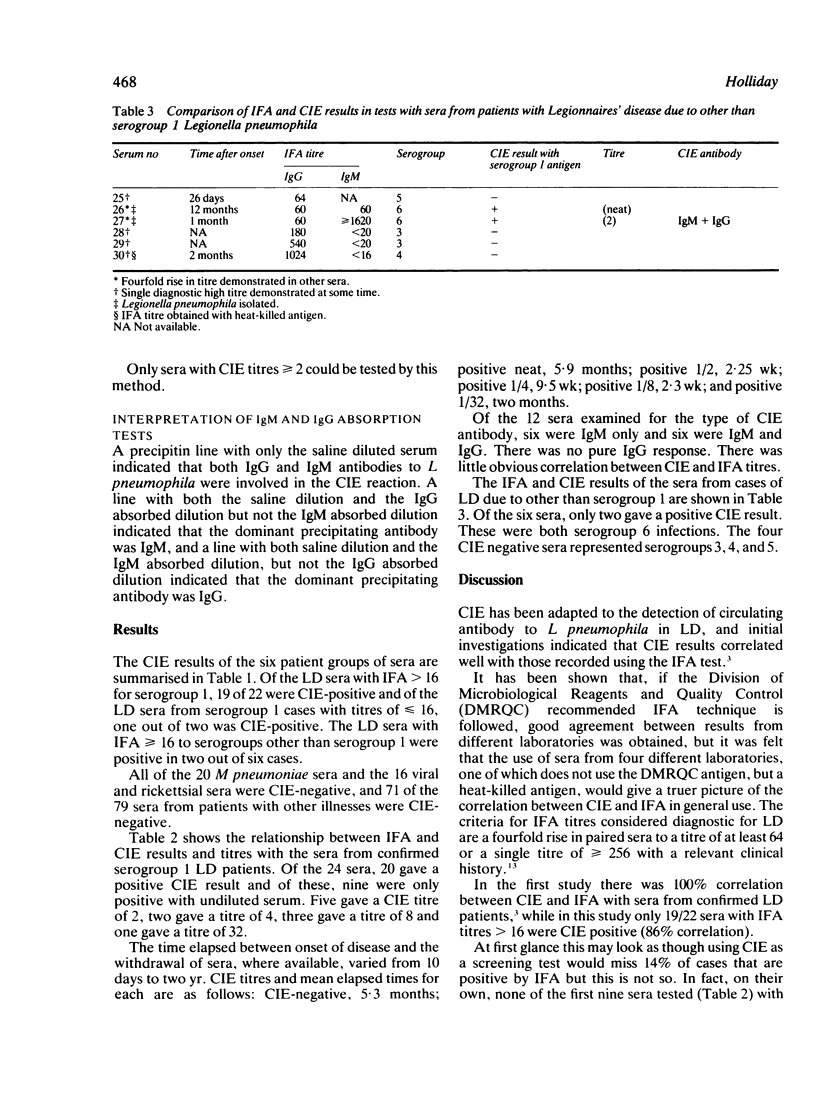
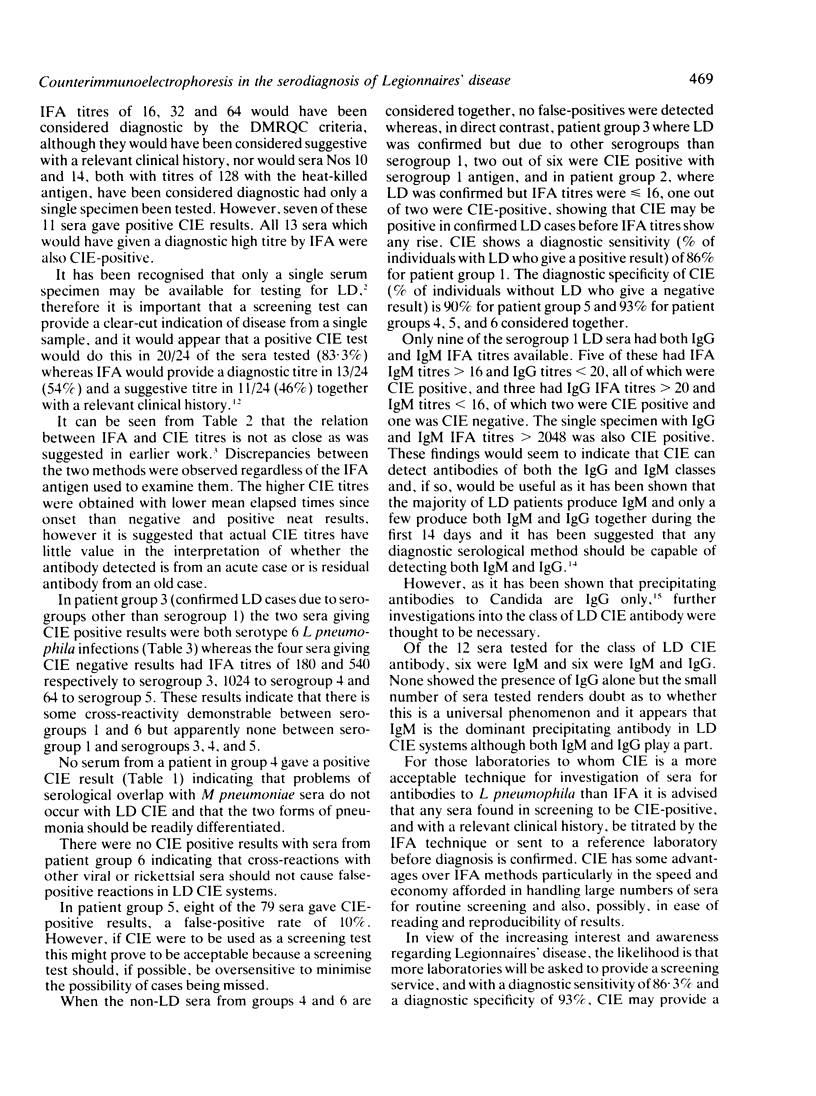
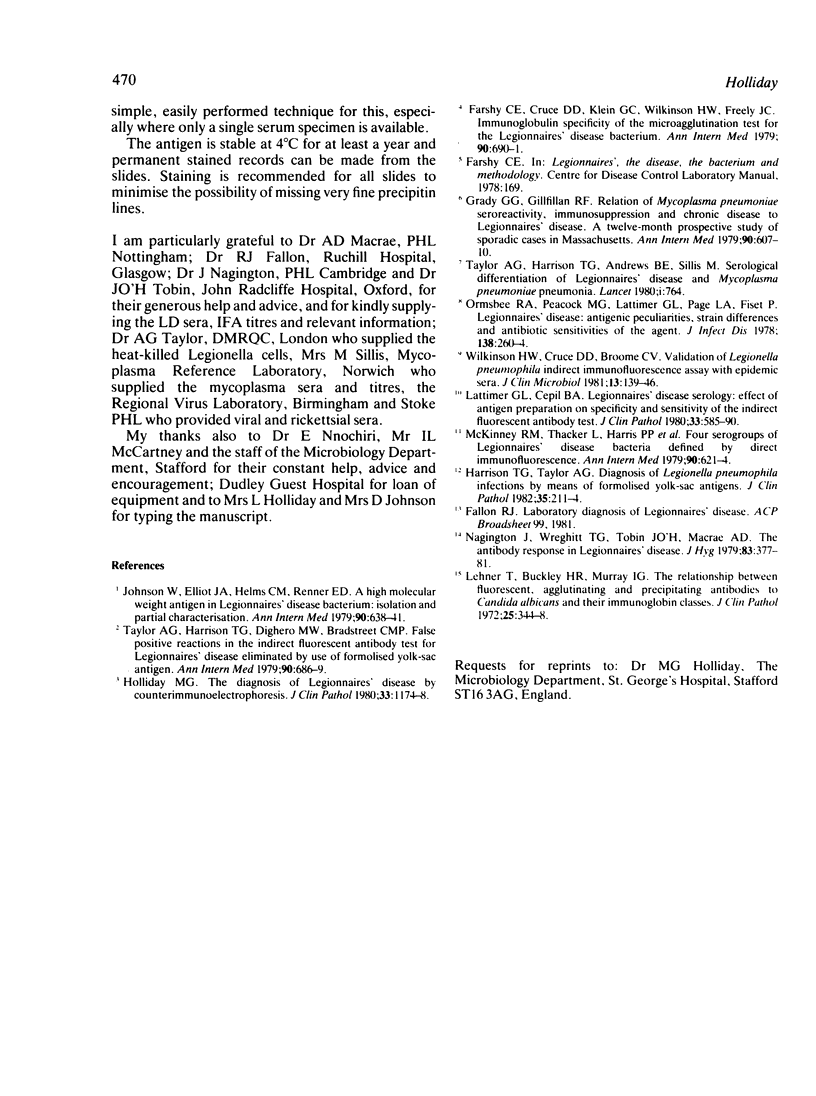
Selected References
These references are in PubMed. This may not be the complete list of references from this article.
- Farshy C. E., Cruce D. D., Klein G. C., Wilkinson H. W., Feeley J. C. Immunoglobulin specificity of the microagglutination test for the Legionnaires' disease bacterium. Ann Intern Med. 1979 Apr;90(4):690–690. doi: 10.7326/0003-4819-90-4-690. [DOI] [PubMed] [Google Scholar]
- Grady G. F., Gilfillan R. F. Relation of Mycoplasma pneumoniae seroreactivity, immunosuppression, and chronic disease to Legionnaires' disease. A twelve-month prospective study of sporadic cases in Massachusetts. Ann Intern Med. 1979 Apr;90(4):607–610. doi: 10.7326/0003-4819-90-4-607. [DOI] [PubMed] [Google Scholar]
- Harrison T. G., Taylor A. G. Diagnosis of Legionella pneumophila infections by means of formolised yolk sac antigens. J Clin Pathol. 1982 Feb;35(2):211–214. doi: 10.1136/jcp.35.2.211. [DOI] [PMC free article] [PubMed] [Google Scholar]
- Holliday M. G. The diagnosis of Legionnaires' disease by counterimmunoelectrophoresis. J Clin Pathol. 1980 Dec;33(12):1174–1178. doi: 10.1136/jcp.33.12.1174. [DOI] [PMC free article] [PubMed] [Google Scholar]
- Johnson W., Elliott J. A., Helms C. M., Renner E. D. A high molecular weight antigen in Legionnaires' disease bacterium: isolation and partial characterization. Ann Intern Med. 1979 Apr;90(4):638–641. doi: 10.7326/0003-4819-90-4-638. [DOI] [PubMed] [Google Scholar]
- Lattimer G. L., Cepil B. A. Legionnaires' disease serology. Effect of antigen preparation on specificity and sensitivity of the indirect fluorescent antibody test. J Clin Pathol. 1980 Jun;33(6):585–590. doi: 10.1136/jcp.33.6.585. [DOI] [PMC free article] [PubMed] [Google Scholar]
- Lehner T., Buckley H. R., Murray I. G. The relationship between fluorescent, agglutinating, and precipitating antibodies to Candida albicans and their immunoglobulin classes. J Clin Pathol. 1972 Apr;25(4):344–348. doi: 10.1136/jcp.25.4.344. [DOI] [PMC free article] [PubMed] [Google Scholar]
- McKinney R. M., Thacker L., Harris P. P., Lewallen K. R., Hebert G. A., Edelstein P. H., Thomason B. M. Four serogroups of Legionnaires' disease bacteria defined by direct immunofluorescence. Ann Intern Med. 1979 Apr;90(4):621–624. doi: 10.7326/0003-4819-90-4-621. [DOI] [PubMed] [Google Scholar]
- Nagington J., Wreghitt T. G., Tobin J. O., Macrae A. D. The antibody response in Legionnaires' disease. J Hyg (Lond) 1979 Oct;83(2):377–381. doi: 10.1017/s0022172400026176. [DOI] [PMC free article] [PubMed] [Google Scholar]
- Ormsbee R. A., Peacock M. G., Lattimer G. L., Page L. A., Fiset P. Legionnaires' disease: antigenic peculiarities, strain differences, and antibiotic sensitivities of the agent. J Infect Dis. 1978 Aug;138(2):260–264. doi: 10.1093/infdis/138.2.260. [DOI] [PubMed] [Google Scholar]
- Taylor A. G., Harrison T. G., Andrews B. E., Sillis M. Serological differentiation of Legionnaires' Disease and Mycoplasma pneumoniae pneumonia. Lancet. 1980 Apr 5;1(8171):764–764. doi: 10.1016/s0140-6736(80)91254-4. [DOI] [PubMed] [Google Scholar]
- Taylor A. G., Harrison T. G., Dighero M. W., Bradstreet C. M. False positive reactions in the indirect fluorescent antibody test for Legionnaires' disease eliminated by use of formolised yolk-sac antigen. Ann Intern Med. 1979 Apr;90(4):686–689. doi: 10.7326/0003-4819-90-4-686. [DOI] [PubMed] [Google Scholar]


